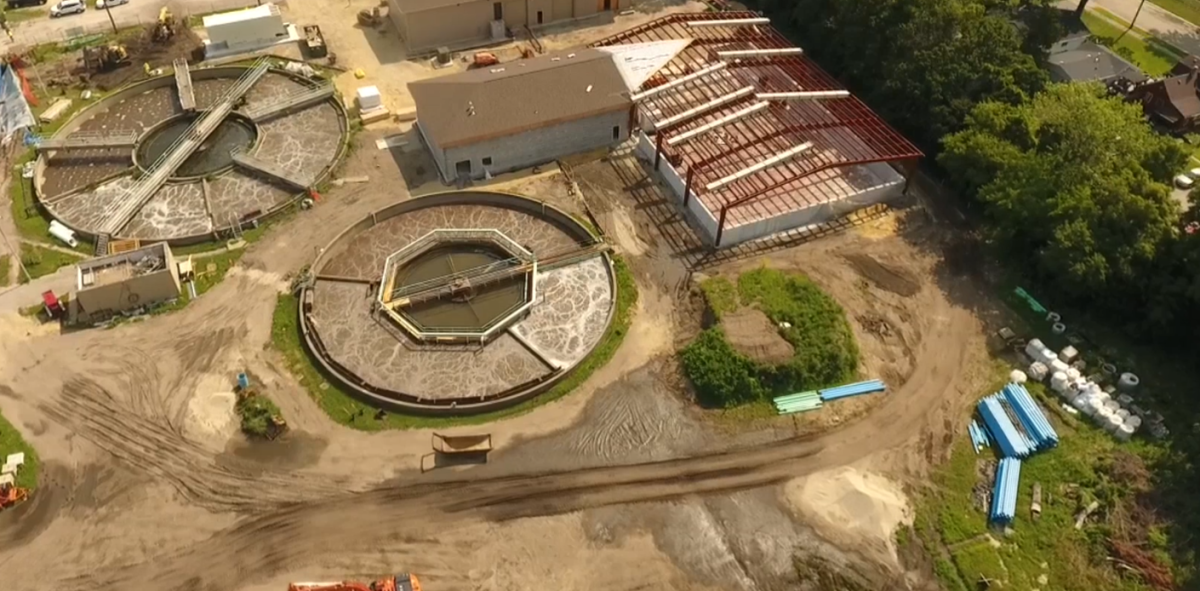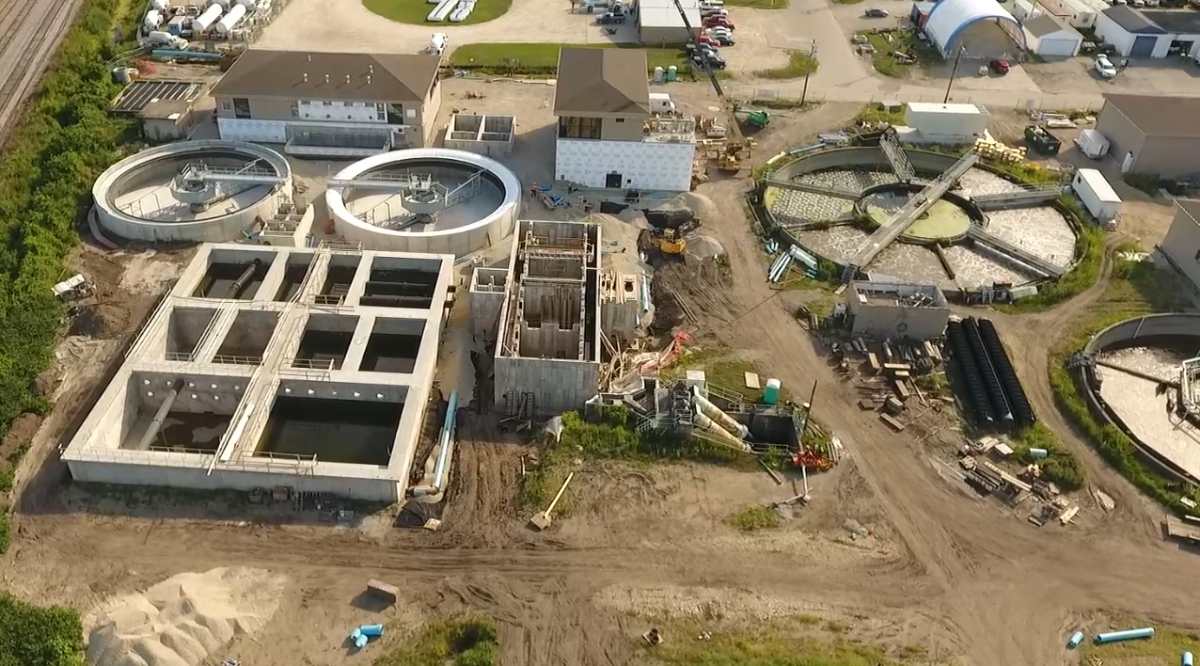What steps are included in the tertiary wastewater treatment process?
Under the auspices of the Safe Drinking Water Act, the U.S. Environmental Protection Agency applies the secondary treatment standards for wastewater as national minimum requirements for discharges from wastewater treatment plants to U.S. surface waters. Depending on receiving water conditions or specific state regulations demanding higher-quality effluent, however, the tertiary wastewater treatment process may be justified to supplement conventional primary and secondary stages of wastewater treatment.
If treated wastewater is unsafe after primary physical methods like filtration and the biological processes of secondary treatment, Publicly Owned Treatment Works (POTWs) can rely on advanced filtration and disinfection practices. Implementing advanced techniques for tertiary wastewater treatment destroys pathogenic organisms and removes suspended solids or nutrients from the effluent and leaves water suitable for reuse.
Below, we discuss key steps in the tertiary wastewater treatment process and why you need an experienced team of wastewater engineers to help implement these techniques at your local POTW.
Steps in the tertiary wastewater treatment process
Based on local conditions, tertiary wastewater treatment is designed to remove any nutrients, pathogens, nonbiodegradable compounds, inorganic dissolved solids and suspended solids, heavy metals and even micropollutants that remain after the secondary treatment stage. Most tertiary treatment processes include physicochemical methods, including filtration, coagulation, reverse osmosis, activated carbon adsorption and disinfection.
To comply with effluent standards, municipal leaders may choose a range of tertiary wastewater treatment methods to implement at their discretion. Key steps include:
- Filtration. Filtration reduces the concentration of suspended solids associated with Biochemical Oxygen Demand (BOD) in the treated effluent. Activated carbon, sand and finely woven cloth filters are the most common media used for filtration. The filters are available in different types, including bag, drum and disc filters.
- Bag filters: For surface media, these filters are made of mesh, or felt for depth media. Such filters are most suitable for POTWs aiming to reduce contaminants to a specific micron rating and can be used across a range of treatment plants.
- Drum filters: A woven cloth filter around the drum separates solid particles from the wastewater and filtered water moves from inside the drum through the filter on the partially submerged drum and outward into the collection tank. Once the separation is complete, the media components are backwashed and reused.
- Disc filters: Multiple discs with cloth filters are attached to a central drum. Gravity pushes wastewater from the drum into the filters, and solid particles in the effluent are separated by the media mounted on each side of the discs. Clean water accumulates in the collection tank, and the media saturated with particles are cleaned via backwashing.
Innovative filtration technologies like reverse osmosis and nanofiltration membranes have seen increased popularity among wastewater treatment plant operators, adopted to remove various types of dissolved solids. The principle behind these filtration techniques is to apply pressure to the effluent from one side of a selective membrane to remove large molecules and ions. The solute remains on the pressurized side of the membrane, leaving the pure solution to pass to the other side.
- Disinfection: Injecting chlorine into the headworks of an effluent detention chamber kills pathogens in the wastewater. The treated effluent requires dechlorination before being discharged to surface waters. Adding sodium bisulfite to the effluent causes a reaction with chloride ions and reduces chlorine concentration to levels safe enough for release into the environment. Alternatives to chlorine treatment include disinfection using ozone and ultraviolet radiation.
- Discharge: Once treated wastewater meets federal and state effluent standards, it is ready to be discharged into the environment. POTWs must also comply with specific municipal requirements for effluent discharge.
- Reuse: After tertiary treatment, the disinfected wastewater can be used for applications, including utility cooling, oil and gas extraction and refining, industrial and manufacturing processes, and irrigation.
Tertiary wastewater treatment is a more advanced, rigorous treatment that is particularly applicable for POTWs discharging effluents into sensitive aquatic ecosystems. Determining whether your local POTW should implement tertiary treatment requires the expertise of experienced wastewater engineers.
Partnering with wastewater engineers for tertiary wastewater treatment
While installing a tertiary wastewater treatment system requires an upfront investment, the initial outlay pays long-term benefits, including:
- Longevity and low maintenance that reduce the overall ownership cost.
- Low capital cost and operational flexibility.
- Energy savings.
- Reduced water consumption.
- Reduced chemical costs.
- Lower utility costs.
While installing a tertiary wastewater treatment system requires an upfront investment, the initial outlay pays long-term benefits, including:
- Longevity and low maintenance that reduce the overall ownership cost.
- Low capital cost and operational flexibility.
- Energy savings.
- Reduced water consumption.
- Reduced chemical costs.
- Lower utility costs.
Fehr Graham professionals understand the challenges faced by municipalities considering tertiary treatment systems for local treatment plants. Our team of wastewater engineers is committed to helping communities improve the quality of the effluent and preserving the environment. From conducting topographic surveys, developing engineering designs and planning upgrades to administering and overseeing construction and helping with funding, we navigate every step of the process. Our past projects in Mahomet, South Beloit and several other communities have helped local POTWs meet the demands of their growing populations.
To learn more about how Fehr Graham can help implement or upgrade the tertiary wastewater treatment process at your local POTW, contact us or give us a call at 217.352.7688.
 Michael Hansen is a Professional Engineer and a Senior Project Manager who is deeply rooted in the engineering industry.
With nearly 20 years of experience in civil engineering, he is Fehr Graham’s point person in central and southern
Illinois. Michael serves as the Branch Manager for the firm’s Champaign, Illinois, office and is passionate about
helping engineers and technicians thrive in a team environment. He specializes in managing water, wastewater, water
resource and transportation projects. Reach him at
Michael Hansen is a Professional Engineer and a Senior Project Manager who is deeply rooted in the engineering industry.
With nearly 20 years of experience in civil engineering, he is Fehr Graham’s point person in central and southern
Illinois. Michael serves as the Branch Manager for the firm’s Champaign, Illinois, office and is passionate about
helping engineers and technicians thrive in a team environment. He specializes in managing water, wastewater, water
resource and transportation projects. Reach him at
Collaborative, Insightful, Results-Driven Solutions
Fehr Graham provides innovative engineering and environmental solutions to help improve the lives and communities of our customers.



